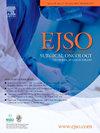优化胃癌新辅助治疗后的手术时机:来自多中心回顾性分析的见解
IF 3.5
2区 医学
Q2 ONCOLOGY
引用次数: 0
摘要
新辅助治疗(NAT)是局部晚期胃癌治疗的基石,可以改善手术结果和生存率。然而,NAT术后的最佳手术时间仍然存在争议。本研究评估了NAT和手术之间的间隔时间对总生存期(OS)的影响,并探讨了相关的临床病理因素。方法回顾性分析全国3个中心的893例胃腺癌行NAT和根治性手术的患者资料。手术间隔进行分类(~ 28天、29-42天、42天)。生存分析采用限制三次样条(RCS)模型、Kaplan-Meier方法和Cox比例风险回归。结果术后28天内手术的患者有较好的OS,超过28天的患者预后较差。RCS分析显示,间隔时间超过28天,风险增加。间隔时间过长表明肿瘤消退的效果下降。分层分析表明,NAT反应差(TRG 3)的患者尤其受益于4周内的手术,而延迟则是有害的。结论及时手术,特别是术后4周内手术,可优化生存结果,特别是对术后反应有限的患者。该研究强调了个体化手术时机的必要性,并呼吁进行前瞻性多中心验证。本文章由计算机程序翻译,如有差异,请以英文原文为准。
Optimizing surgical timing following neoadjuvant therapy for gastric Cancer: Insights from a multicenter retrospective analysis
Background
Neoadjuvant therapy (NAT) is a cornerstone in the treatment of locally advanced gastric cancer, improving surgical outcomes and survival. However, the optimal timing for surgery following NAT remains controversial. This study evaluates the impact of the interval between NAT and surgery on overall survival (OS) and explores associated clinicopathological factors.
Methods
A retrospective analysis of 893 patients undergoing NAT and curative surgery for gastric adenocarcinoma across three centers in China was conducted. Surgical intervals were categorized (∼28 days, 29–42 days, >42 days). Survival analyses employed restricted cubic spline (RCS) models, Kaplan-Meier methods, and Cox proportional hazards regression.
Results
Patients operated on within 28 days post-NAT had the most favorable OS, while intervals longer than 28 days were independently associated with worse outcomes. RCS analysis revealed increased risks for intervals longer than 28 days. Prolonged intervals showed declining effectiveness in tumor regression. Stratified analyses indicated that patients with poor NAT response (TRG 3) particularly benefited from surgery within 4 weeks, while delays were detrimental.
Conclusions
Timely surgery, especially within 4 weeks post-NAT, optimizes survival outcomes, particularly in patients with limited NAT response. This study underscores the need for individualized surgical timing and calls for prospective multicenter validation.
求助全文
通过发布文献求助,成功后即可免费获取论文全文。
去求助
来源期刊

Ejso
医学-外科
CiteScore
6.40
自引率
2.60%
发文量
1148
审稿时长
41 days
期刊介绍:
JSO - European Journal of Surgical Oncology ("the Journal of Cancer Surgery") is the Official Journal of the European Society of Surgical Oncology and BASO ~ the Association for Cancer Surgery.
The EJSO aims to advance surgical oncology research and practice through the publication of original research articles, review articles, editorials, debates and correspondence.
 求助内容:
求助内容: 应助结果提醒方式:
应助结果提醒方式:


